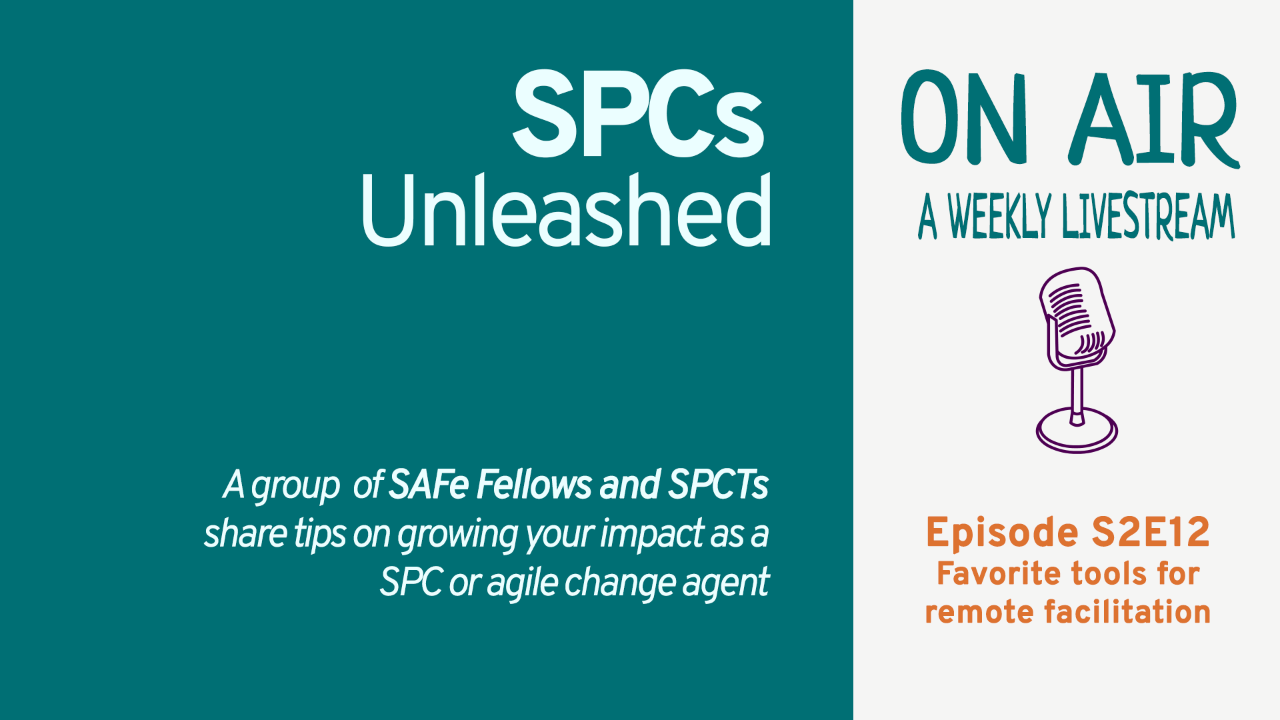SPCs Unleashed S2E12 - Stand, Share, Engage: Innovating your Remote Facilitation Setup
Apr 05, 2025
“A cheap writing tablet can transform your PowerPoint into a shared canvas.”
Ali Hajou
Remote facilitation has come a long way since the early days of clunky video calls. In this lively episode, four experienced facilitators—Mark, Ali, Stephan, and Niko—swap stories about how they transformed their home offices into high-energy digital studios. From teleprompters and standing desks to iPhone cameras strapped to arms, they prove that you don’t necessarily need massive budgets to build an engaging remote-training setup.
Key Insights & Highlights
- Start Small, Then Iterate: Ali kicked off his remote facilitation journey using an old smartphone as a second camera, proving that you don’t need high-end equipment right away. Simple upgrades like a cheap writing tablet (Wacom One) or extra monitor can quickly elevate the online learning experience.
- Stand and Deliver: Mark discovered that switching to a standing desk injected fresh energy into his sessions. Standing mirrors the dynamic feel of an in-person workshop and helps prevent the infamous “Zoom slump.”
- Keep It Authentic: Stephan emphasized not overcomplicating gear. If you’re not into flashy overlays or spinning graphics, that’s okay. A good microphone, decent lighting, and an accessible digital board (like Miro or even Excel) may be all you need.
- Break It Up: Niko’s approach reminded everyone that pacing matters more than ever in virtual settings. Frequent short breaks—enough time to actually stand, stretch, or even jog—help participants stay engaged instead of flipping over to email.
- Next-Level Tools: For those who want to geek out, open-source OBS software allows you to switch seamlessly between multiple cameras, add fun overlays, and keep the focus on the content. If you prefer a more plug-and-play style, look at hardware switchers (like the Blackmagic ATEM Mini) or a Stream Deck to simplify switching scenes and slides.
Human Touch
Each host has a unique style. Ali is the “hardware guy,” always tinkering with his suitcase studio so he can set up anywhere in 10 minutes. Stephan, self-proclaimed “old dog,” embraced new gadgets like a teleprompter to simulate direct eye contact. Niko loves mixing analog tools (like paper cards) with digital meeting rooms, ensuring creative variety. Mark ties it all together with a stand-up energy that keeps participants on their toes—literally.
Actionable Takeaways
- Focus on Comfort First: Good lighting, clear audio, and a decent camera angle will solve 80% of remote issues.
- Use Breaks Wisely: Add a 10–15 minute break every hour to maintain energy and let participants recharge.
- Experiment Gradually: Before investing in expensive gear, test software solutions like OBS or the Stream Deck app for your phone.
- Stay Authentic: Don’t chase every shiny new tool; pick what truly enhances your facilitation style.
Conclusion
Ready to level up your remote facilitation game? Start by experimenting with one new piece of gear or software—then let your creativity lead the way. And be sure to tune in for the next episode, where the team dives into the software side of remote workshops, sharing demos, tips, and more.
